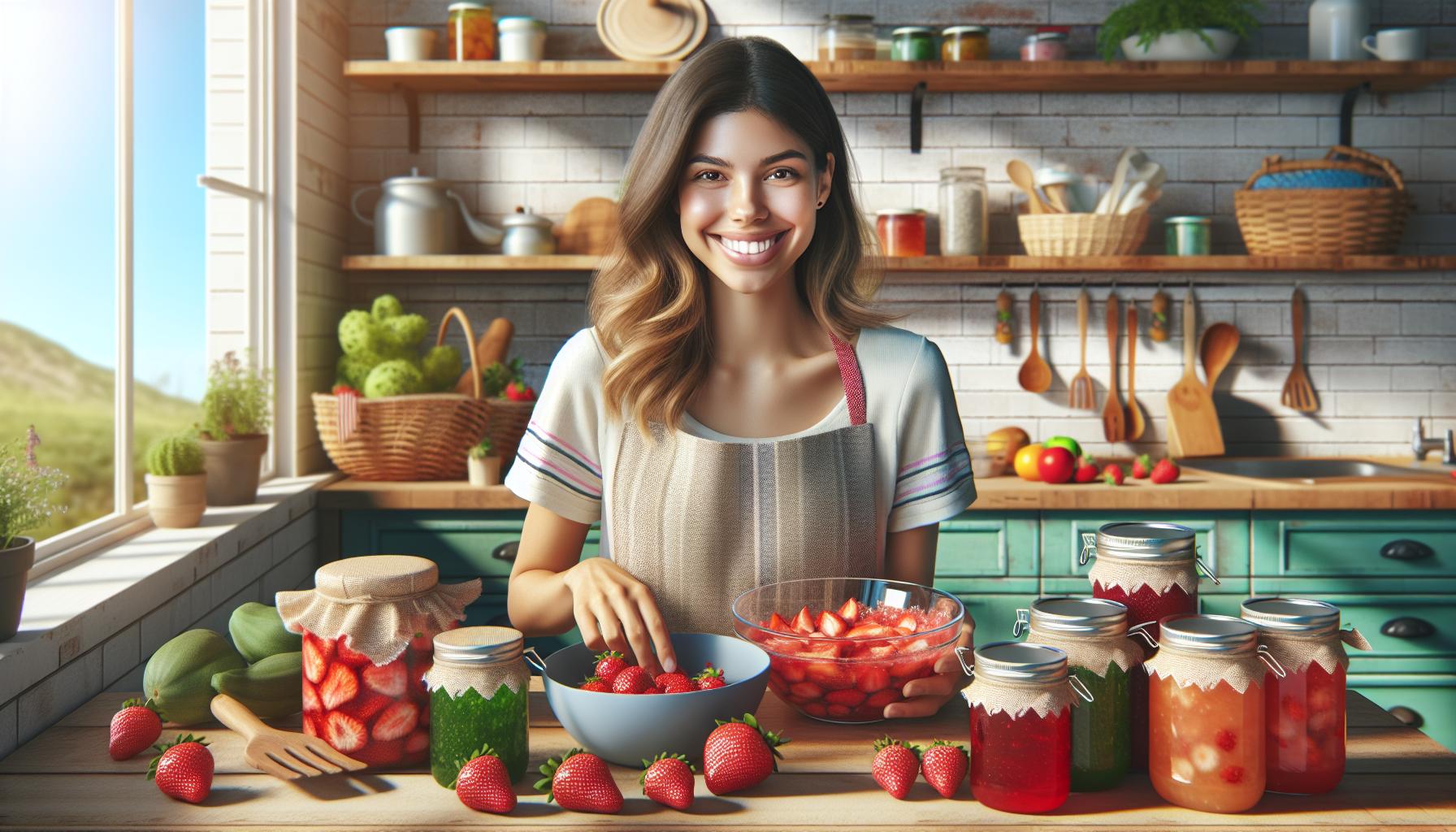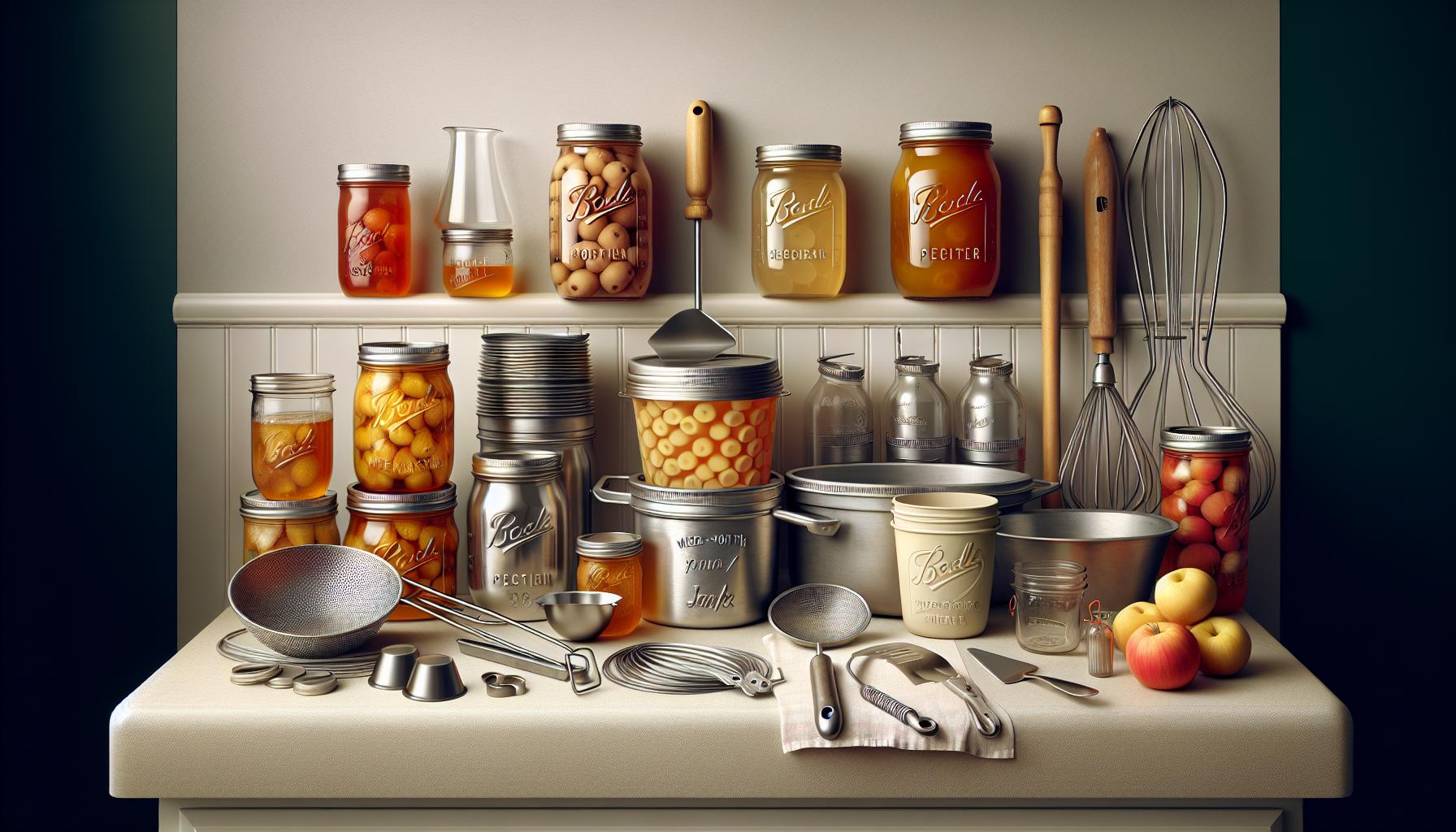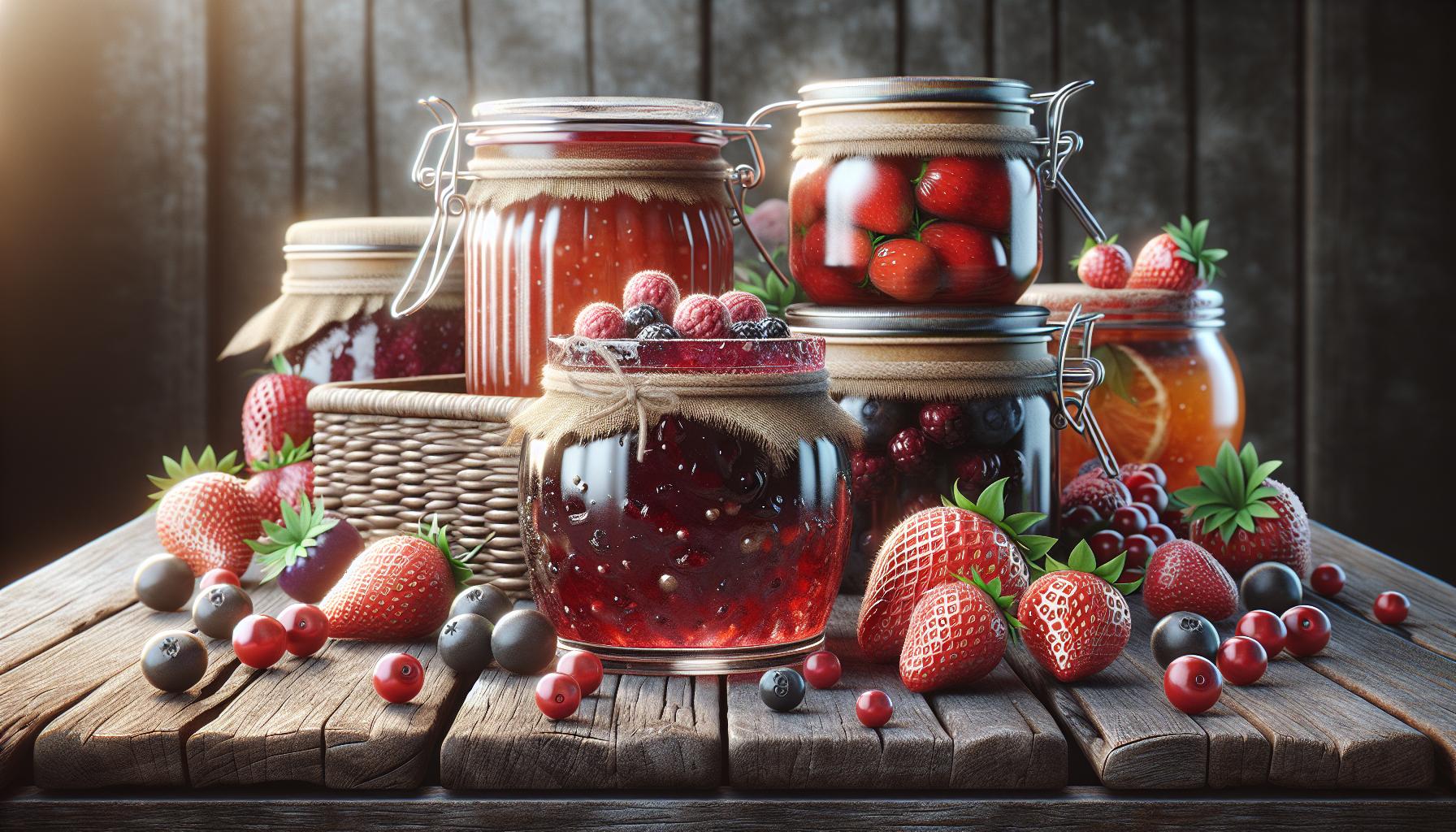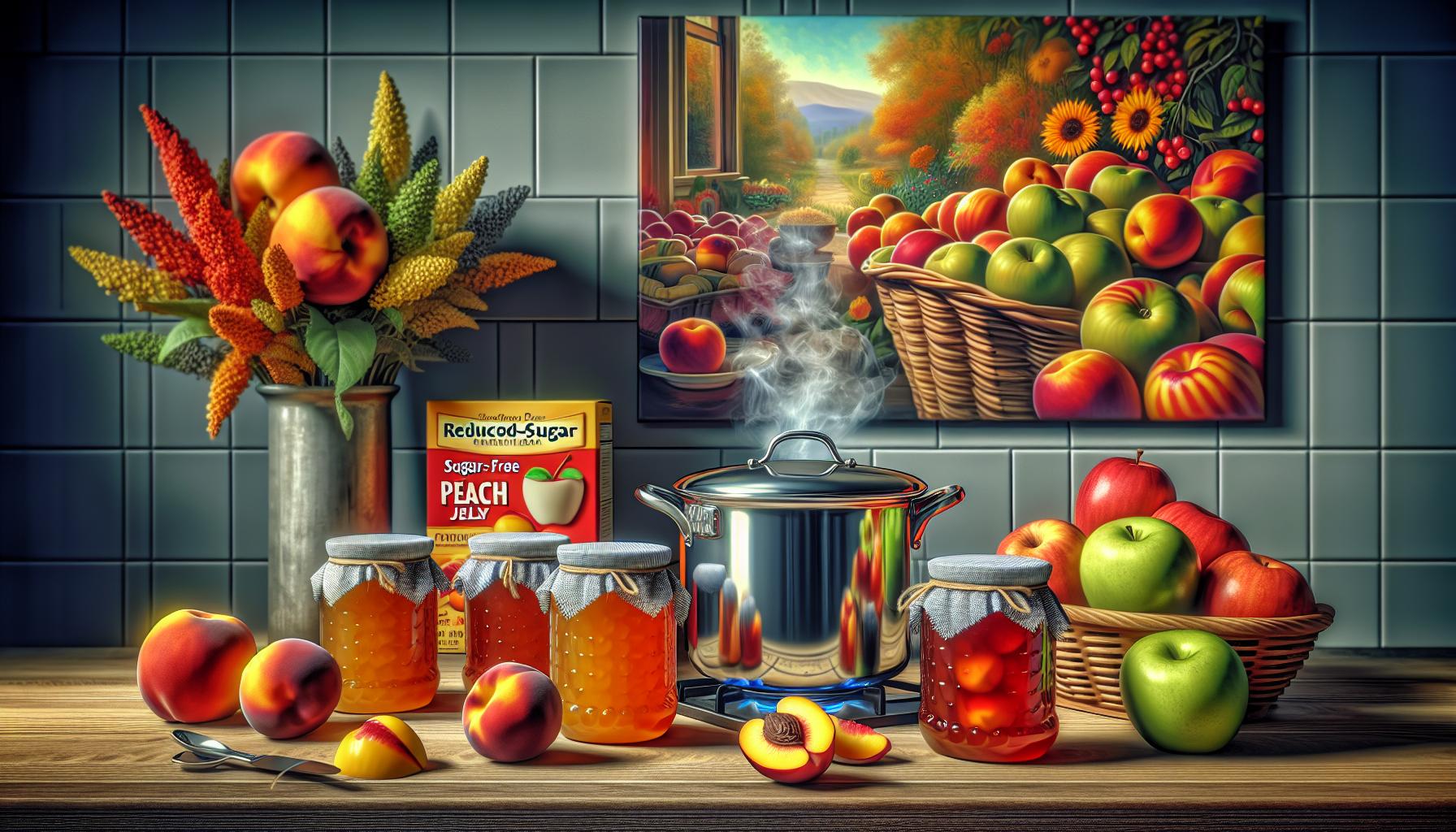Phone:
(701)814-6992
Physical address:
6296 Donnelly Plaza
Ratkeville, Bahamas.

Looking to transform fresh fruits into delectable jams and jellies? MCP pectin recipes offer foolproof ways to create homemade preserves that’ll make grandma proud. This premium pectin brand has been helping home canners achieve perfect results since the 1940s.
Whether you’re a seasoned preserve maker or just starting your canning journey MCP pectin provides reliable recipes that guarantee success every time. From classic strawberry jam to exotic fruit combinations these tested recipes deliver consistent results with the perfect gel and amazing flavor that’ll have everyone asking for more.
MCP Pectin is a natural thickening agent derived from citrus fruits. It enables quick gel formation in jams and jellies by binding with sugar and fruit acids at specific temperatures.

Successful canning with MCP pectin requires specific tools and equipment. Here’s a comprehensive guide to the essential items needed for safe and effective preserve-making.
A water bath canner or large stockpot forms the foundation of canning equipment. Essential tools include:

MCP pectin recipes create consistent gels with vibrant fruit flavors. These tested recipes deliver reliable results when following precise measurements and processing times.
Traditional strawberry jam combines 4 cups crushed strawberries, 7 cups sugar and 1 package MCP pectin. The strawberries require thorough washing, hulling and crushing to achieve uniform consistency. Adding 1/4 cup lemon juice enhances the natural pectin content and creates a balanced flavor profile. The mixture reaches gel stage at 220°F after 3-4 minutes of rapid boiling. This recipe yields 8 half-pint jars with a shelf life of 18 months when processed in a water bath for 10 minutes. The finished jam maintains a spreadable consistency with visible fruit pieces distributed throughout.
Mixed berry preserves blend 2 cups each of raspberries, blackberries and blueberries with 6 cups sugar and 1 package MCP pectin. Fresh berries create optimal texture though frozen fruit works when thawed completely. The recipe requires 1/3 cup lemon juice to achieve proper acidity levels. Processing involves a rapid 1-minute boil followed by 10 minutes in a water bath canner. The preserve yields 7-8 half-pint jars featuring distinct berry pieces suspended in a glossy gel. The finished product displays deep purple coloring with balanced sweetness and natural berry tartness.

MCP pectin offers versatile options for creating sugar-free and reduced-sugar preserves without compromising taste or texture. These recipes accommodate dietary restrictions while maintaining the fresh fruit flavors.
Sugar-free peach jam combines 4 cups of crushed ripe peaches with 1 box of MCP light pectin and 2 cups of sugar substitute. The recipe requires adding 2 tablespoons of lemon juice to enhance natural pectin content. Mixing peaches with pectin creates a base mixture that heats to a rolling boil for 1 minute. Adding the sugar substitute after boiling maintains sweetness without affecting gel formation. This recipe yields 5 half-pint jars with a storage life of 12 months when processed in a water bath canner at 212°F (100°C) for 10 minutes.
Reduced sugar apple jelly uses 4 cups of fresh apple juice paired with 1 box of MCP light pectin and 2 cups of sugar, cutting traditional sugar content by 50%. The process starts with combining apple juice and pectin in a large pot, bringing the mixture to a full rolling boil. Adding sugar gradually ensures proper dissolution and gel formation. The jelly requires 1 minute of continuous boiling after sugar addition. This recipe produces 6 half-pint jars of crystal-clear jelly with authentic apple flavor. Processing time in a water bath canner remains 10 minutes at 212°F (100°C).
MCP pectin recipes occasionally encounter setbacks that affect the final texture of preserves. Understanding how to address these common issues ensures consistent results every time.
Runny preserves result from incorrect pectin ratios or processing temperatures. Adding 1/4 cup sugar mixed with 1 tablespoon MCP pectin per quart of preserves reestablishes proper gel formation. Pour the preserves into a large saucepan, stir in the pectin-sugar mixture, then bring to a rolling boil for 3 minutes. Test the gel set by placing a spoonful on a chilled plate – it gels properly when a film forms on the surface. Process the recooked preserves in sterilized jars at 212°F (100°C) for 10 minutes.
Crystallization occurs when sugar molecules form large crystals in preserves. Mix the pectin with 1/4 cup sugar from the recipe’s measured amount before adding it to fruit. Heat the fruit mixture gradually to 212°F (100°C) while stirring constantly. Add the remaining sugar in small portions over 2-3 minutes rather than all at once. Store finished preserves at temperatures between 50-70°F (10-21°C) to prevent sugar crystal formation. Remove any visible foam during cooking, as it contains concentrated sugar that promotes crystallization.
Proper storage extends MCP pectin preserves’ shelf life to 18 months while maintaining optimal flavor. Store sealed jars in a cool dark location between 50-70°F (10-21°C) for maximum preservation.
| Storage Condition | Shelf Life | Temperature Range |
|---|---|---|
| Unopened Sealed Jars | 18 months | 50-70°F |
| Opened Jars | 3 weeks | 35-40°F |
| Unsealed Jars | Immediate use | N/A |
These storage practices protect MCP pectin preserves from spoilage while maintaining their fresh-made quality. Label each jar with contents date batch numbers for proper rotation.
MCP pectin stands as a trusted companion for both seasoned canners and beginners who want to create delicious homemade preserves. Its versatile product line accommodates various dietary needs while delivering consistent results and extended shelf life.
Whether making traditional strawberry jam light fruit preserves or sugar-free alternatives MCP pectin recipes offer reliable solutions for transforming fresh fruits into delectable spreads. With proper equipment sterilization and storage practices these preserves can bring the taste of summer to tables year-round.
The brand’s time-tested formulas paired with modern canning techniques ensure that home preserving remains an accessible and rewarding endeavor for anyone ready to embark on their canning journey.